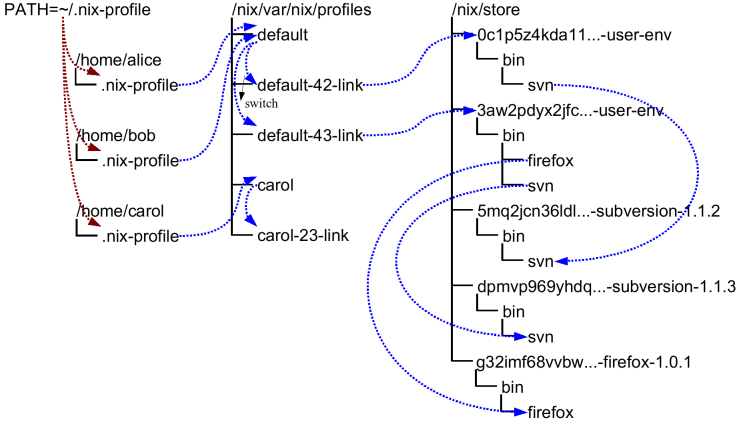2nd chunk of `doc/manual/source/package-management/profiles.md`
ef64df728d31a62b7fe895a93945324fa3520e21ae59cada00000001000004eb

Of course, you wouldn’t want to type
```console
$ /nix/store/dpmvp969yhdq...-subversion-1.1.3/bin/svn
```
every time you want to run Subversion. Of course we could set up the
`PATH` environment variable to include the `bin` directory of every
package we want to use, but this is not very convenient since changing
`PATH` doesn’t take effect for already existing processes. The solution
Nix uses is to create directory trees of symlinks to *activated*
packages. These are called *user environments* and they are packages
themselves (though automatically generated by `nix-env`), so they too
reside in the Nix store. For instance, in the figure above, the user
environment `/nix/store/0c1p5z4kda11...-user-env` contains a symlink to
just Subversion 1.1.2 (arrows in the figure indicate symlinks). This
would be what we would obtain if we had done
```console
$ nix-env --install --attr nixpkgs.subversion
```
on a set of Nix expressions that contained Subversion 1.1.2.
This doesn’t in itself solve the problem, of course; you wouldn’t want
to type `/nix/store/0c1p5z4kda11...-user-env/bin/svn` either. That’s why
there are symlinks outside of the store that point to the user